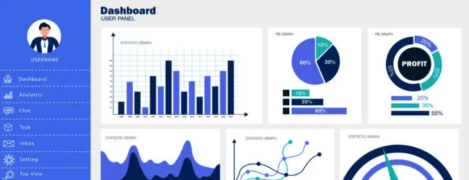Evolving Your Attribution Strategy Over Time

Marketing attribution is not a static process—it’s a living system that must adapt to changes in customer behavior, market trends, and business goals. As your SaaS company, herdr.io, grows and scales, your attribution strategy must evolve to remain effective and actionable.
In this final article of our series, we’ll explore how to refine and adapt your attribution strategy over time. We’ll cover scaling your framework, incorporating advanced tools and techniques, and preparing for future trends in marketing attribution.
1. Why Your Attribution Strategy Must Evolve
As your business scales, so do the complexities of your customer journeys and marketing channels. An evolving attribution strategy allows you to:
- Capture new touchpoints: As you launch new campaigns or add marketing channels (e.g., podcasts or TikTok), your attribution must include these interactions.
- Respond to changing customer behavior: Customers may interact differently with your brand over time, requiring updated tracking and models.
- Adapt to new tools and technologies: Emerging attribution tools and AI-powered insights can help you optimize in ways previously unavailable.
2. Reassess Your Attribution Models
The attribution model you chose when starting out may no longer fully reflect the complexity of your customer journeys.
Signs It’s Time to Change Models:
- Increased cross-channel interactions: If customers touch multiple channels before converting, you may need to shift from first- or last-touch models to multi-touch or data-driven attribution.
- Longer sales cycles: For SaaS businesses like herdr.io, longer buyer journeys may require position-based models to credit touchpoints appropriately.
Next Steps:
- Experiment with new models: Test multi-touch or algorithmic attribution to capture nuanced insights.
- Use data-driven models: Tools like Google Analytics 4 can automatically assign credit based on historical performance patterns.
3. Incorporate New Channels and Campaigns
As herdr.io grows, you may expand into new marketing channels, such as influencer partnerships, paid webinars, or affiliate marketing. Ensure your attribution framework can accommodate these additions.
Steps to Expand:
- Update your tracking setup: Add UTM codes and conversion tracking for new channels.
- Monitor channel overlap: Analyze how new channels influence existing ones (e.g., webinars boosting newsletter sign-ups).
- Reevaluate budget allocations: Shift investments based on the performance of new channels.
4. Scale with Advanced Attribution Tools
As your data volume increases, manual tracking and basic tools may no longer suffice. Investing in advanced attribution platforms can help you scale effectively.
Recommended Tools for Scaling:
- Attribution software: Platforms like Ruler Analytics or Triple Whale offer robust multi-touch tracking.
- Customer data platforms (CDPs): Tools like Segment unify customer data across channels for advanced insights.
- AI-driven analytics: Leverage machine learning tools that identify trends and predict future performance.
5. Leverage Predictive Analytics
As attribution becomes more sophisticated, predictive analytics can help you anticipate future performance and trends.
Benefits of Predictive Analytics:
- Forecast customer lifetime value (CLV) by channel.
- Predict the likelihood of conversion based on customer behavior patterns.
- Identify at-risk campaigns before they underperform.
6. Automate and Optimize Attribution Processes
To keep pace with scaling campaigns and data complexity, automation is your ally.
Automation Techniques:
- Real-time data syncing: Use platforms that integrate directly with ad tools, CRMs, and analytics dashboards.
- Automated reporting: Schedule regular reports on channel performance and attribution metrics.
- AI-based optimizations: Platforms like HubSpot or Google Ads can automatically adjust bids or budgets based on attribution insights.
7. Stay Ahead of Industry Trends
Marketing attribution is constantly evolving. Stay informed about changes in technology, privacy regulations, and customer expectations to future-proof your strategy.
Trends to Watch:
- Privacy-first tracking: Adapt to changes like cookie restrictions by using server-side tracking or first-party data.
- Cross-device and cross-platform tracking: Ensure your tools capture touchpoints across mobile, desktop, and connected devices.
- AI and machine learning: Expect greater automation in identifying trends and assigning attribution credit.
8. Regularly Audit and Optimize
A successful attribution strategy requires regular reviews to ensure it remains accurate and effective.
Audit Checklist:
- Are all touchpoints being tracked properly?
- Do your attribution models reflect current customer behavior?
- Are your insights actionable and leading to measurable improvements?
Example: Evolving Attribution at herdr.io
Year 1: herdr.io uses a first-touch model to measure the impact of LinkedIn Ads in driving trial sign-ups.
Year 2: As herdr.io adds webinars and affiliate partnerships, it switches to a multi-touch model to capture the contributions of mid- and lower-funnel activities.
Year 3: With advanced data integration, herdr.io adopts predictive analytics to forecast CLV and uses AI tools to automate campaign optimizations.
Final Thoughts
Evolving your attribution strategy is essential to keeping your marketing efforts effective as your SaaS business grows. By reassessing your models, embracing advanced tools, and staying ahead of trends, you’ll ensure your strategy delivers actionable insights and measurable results.
The journey doesn’t end here. Marketing attribution is an ongoing process that thrives on curiosity, experimentation, and adaptation. As herdr.io continues to scale, its attribution framework will serve as a dynamic system, guiding smart decisions and sustainable growth.
Thank you for following along with this series! We hope these insights empower you to build and execute an attribution strategy that drives success for your business.







